Parkano 作者: 来源: 发布时间:2021-10-13
一、所属省或是州,具体位置,人口,面积
Parkano is a town and municipality in Finland. It is located 84 kilometres (52 mi) north of Tampere in the Pirkanmaa region. The population of Parkano is 6,470 (January 31, 2019) and the municipality covers an area of 852.16 km2 (329.02 sq mi) of which 57.50 km2 (22.20 sq mi) is inland water (January 1, 2018). The population density is 7.59/km2 (19.7/sq mi). The municipality is unilingually Finnish.
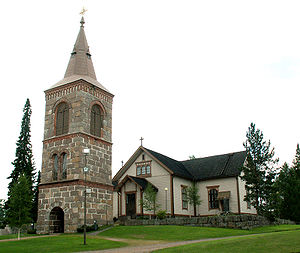
二、自然地理
1.地理条件
The city is sparsely populated, and outside the center itself the population is distributed among 10 other villages scattered in the forest. The north of the town is rugged, streaked with eskers and moraines belonging to the Suomenselkä system. The population, although currently declining slightly, did not experience wide variations during the 19th century (7,700 inhabitants in 1930, 8,801 in 1984).
The city center marks the junction between national 3 (E12) Helsinki-Vaasa and national 23 which joins Pori from Parkano.
The neighboring municipalities are Ikaalinen to the south, Kuru to the east, Kihniö to the northeast, Jalasjärvi to the north (South Ostrobothnia), Karvia to the northwest, Kankaanpää to the west and Jämijärvi to the southwest (the last three in Satakunta.
2. 交通情况
Parkano has developed into an important transport hub. It is located at the intersection of Highway 3 (Helsinki-Tampere-Vaasa) and Highway 23 (Pori-Jyväskylä-Joensuu) and along the main line (Tampere-Seinäjoki). In addition, regional road 332 (Parkano-Kuru) and regional road 274 (Parkano-Karvia) separate from Parkano.
From your own car you can drive from Parkano to Tampere, Seinäjoki and Pori in about an hour.
By bus from Parkano you can get to Tampere and Seinäjoki in about two hours. Parkano has long-distance bus connections to Helsinki, Tampere, Jyväskylä, Pori and Vaasa. Parkano belongs to the western regional ticket area of Tampere. Itineraries and timetables can be found with the help of Matkahuolto's timetable search.The onnibus travels to Tampere and Seinäjoki in about 1.5 hours. The lucky bus stop is along Highway 3.
The train journey to Tampere and Seinäjoki takes about 40 minutes. Parkano Train Station is about 7 km from Parkano Central Station. InterCity and Pendolino trains stop at the station. Train timetables can be found in the VR timetable search.
The Pori – Haapamäki line was inaugurated in 1938 and Parkano railway station was completed in 1934. The station was renamed Kairokoski in 1970. The line between Pori and Haapamäki has been out of service since the late 1980s and is in poor condition in some places.
Municipalities in the track area have been willing to reopen the track for freight traffic with low-emission gas locomotives. The Port of Pori is also interested in opening the line. The use of gas locomotives is much more economical and environmentally friendly than that of diesel locomotives. So far, the rehabilitation of the line for freight has not been profitable. Tampere – Seinäjoki line The section of the main line of the Finnish network from Tampere via Parkano to Seinäjoki was completed in 1971. The line section is also known as the Parkano line and the Parkano straight line. It operates as part of the main line from Helsinki via Tampere and Seinäjoki to Oulu, where trains run frequently. Parkano Train Station is about 7 km from the center of Parkano. Parkano railway station is used in an area with a population of almost 100,000. The number of passengers at the station is about 90,000 annually. Business and commuter traffic to Helsinki and Tampere in particular has been considered important in a survey by the Pirkanmaa Association in 2017.
三、经济发展和规模
According to statistics, the unemployment rate has fallen by 1.7 percent nationwide from the end of September 2017 to the end of September 2018 and come down in all 12 largest cities. In Parkano, the fall in unemployment was more than 40 percent. At the end of September 2018, the unemployment rate in Parkano was 6.5%.
The City of Parkano's income statement for 2018 was significantly better than the original budget. The result was a surplus of almost EUR 1.7 million. The loan portfolio also declined.
四、产业特点/重点项目
Parkano entrepreneurs have about 200 member companies. More detailed information can be found on the companies' websites. The list below shows the largest companies in Parkano (number of employees in brackets):
Kolmostien Terveys Oy, Pihlajalinna-konsernin ja Parkanon kaupungin yhteisyritys
Kopar Oy, metallialan vientiyritys (62/2017)
FennoSteel Oy, metallialan vientiyritys (76/2017)
TM-Rauta Oy, terästukkuliike
Aureskosken Jalostetehdas Oy Tammisto Yhtiöt, puunjalostuksen vientiyritys (noin 40/2019)
Suomen Tekojää Oy, jäähdytys-, ilmanvaihto ja lämpöpumppuratkaisujen vientiyritys (22/2018)
Sähkösuomilammi Oy, sähköasennusyritys (36/2017)
五、风景名胜,景点( attractions)
1. The Parkano Forest Museum
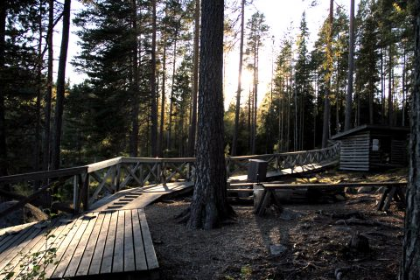
The Forestry Museum showcases the history of the forest industry all the way from rise of the sawmill industry in the 1860s to the mechanization in the 1960s. Within the area of the Forest Museum there’s an exhibition hall, a logging hut, a sauna, a horse stable and forestry machinery. Near the museum you will also find a trail, the Messukallio cliff, a beach, lean-to shelters and campfire sites.
2. Parkano Church
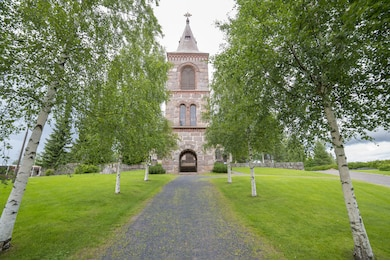
Parkano is a compact and strong industrial city with its unique features. Metal smells like industry and music, trees and green meadows in the river landscape that crosses the city.
3. The Parkano Homeland Museum
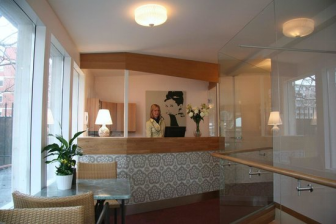
The museums includes the sections of baron Gustaf Wrede af Elimä and the church museum. A cottage with one chamber typical of the Parkano region, agricultural impments.
六、历史文化
1.历史
Parkano has been part of the parish of Ikaalinen from about 1640–1867 (the parish included Ikaalinen, Parkano, Kankaanpää, Kihniö, Jämijärvi, Karvia and Honkajoki) and before that it was part of the ancient parish of Kyrö, whose center was Hämeenkyrö-Viljakkala. Kyrö's keeper included e.g. Hämeenkyrö, formerly Viljakkala, formerly Kuru, Parkano, Ikaalinen, Kankaanpää, Kihniö, Jämijärvi, Karvia, Honkajoki. Kyrö's keeper also kept the so-called Pohjan Kyrön (municipalities from Kyröjoensuu to Viljakkala). The center of the keeper of Kyrö was Hämeenkyrö-Viljakkala, but the difficulty of managing the extensive keeper led to the decentralization of the keeper. In the early Middle Ages, Kyrö stood out from the parish of Sastamala.
Parkano is mentioned as inhabited in a land register from the time of Gustav Vaasa from 1540. The name appears in the form Parckana. The name was written in the Parkana form between 1553 and 1630, but since 1656 the name has appeared in its current form.
According to folklore, the name comes from parked pine (parking pine), which was in a place called Haparo. There, the river flowing from Kirkkojärvi joins the Viinikanjoki. Wood was a meeting place for wilderness men. According to tradition, the Lappish settlement in Parkano has continued until quite late, as the Lappish population gradually merged with the majority population. Many place names still tell about Lappish history in the Parkano region.
In the Middle Ages, Parkano was the northernmost village of Kyrö's large parish and the Castle founded on Lake Linnanjärvi was the northernmost house in the whole of Satakunta province at the beginning of a new era. Permanent settlement in the region came mainly from the south, but some inhabitants came from the east due to the large influx of settlers from Savo. During the famine years of the late 17th century, Parkano lost about a quarter of its population, estimated at about 200 people. A much greater depopulation was experienced in 1868, when more than 750 starving keepers had to be buried.
In 1796, the residence of the parish priest of Ikaalinen was determined to be Parkano, where a separate pulpit was built a few years later. Parkano became the Ikaalinen Chapel in 1841 and an independent parish in 1867. The municipal administration in Parkano began early, when it was decided in the parish in 1866 to establish a municipal government and board. The Parkano Municipal Council began its activities under the new Municipal Act in 1919. The first Member of Parliament from Parkano was the farmer Ivar Alanen (Kok.), Who was a member of Parliament from 1917 to 1922. On Midsummer's Day 1928, lightning struck the bell tower of Parkano Church and from there on into the church itself in the middle of Confirmation service. To the extreme, a full-fledged horror broke out in a church where one person was killed immediately and three died of their injuries later. There were several dozen injured. However, heavy rain put out the fire. The case also attracted national attention.
After the Continuation War, Kaukola settlers were settled in Parkano. Heroes' Tombs of Parkano, photographed 2012 Heroes' graves in the center cemetery of Parkano. Parkano was the largest municipality in the provinces of Turku and Pori until the beginning of 1993. At that time, the cities of Parkano and Ikaalinen as well as the municipalities of Hämeenkyrö, Kihniö, Mouhijärvi and Viljakkala were transferred to Häme County by a decision of the Government. From the county's point of view, the change did not play a major role, as the old counties were abolished in early September 1997.
2. 文化
Parkano Church is a wooden cross church. The church was commissioned in 1805. The church's red granite belfry was completed in 1889. The church and belfry are protected by the Architectural Heritage Act. The cemetery in the center of Parkano was inaugurated in 1805 and was later expanded. A wooden passageway building on the edge of the churchyard. 201 heroic corpses have been buried in the hero cemetery. In the vicinity of the cemetery there is a monument to the fallen 1939-44 'Guardian Soldier' made by sculptor Vilho Aalto. The Parkano Homeland Museum operates in a former granary completed next to the church in 1890. The museum opened to the public in 1958. The museum building houses the departments of the ‘Baron of Parkano’ and the church museum, as well as local artifacts. The Parkano Forest Museum was opened to the public in 1991. It is located about 12 kilometers north of downtown. The museum area has an exhibition hall, a forest cabin, a sauna, a horse stable, a log pontoon and forest machines. In the vicinity of the museum you will find a nature trail, Messukallio, a beach, sheds and campfire sites. The Parkano Region Car Museum opened in 2009. The museum was run by the Parkano Region Mobilistit r.y. The car museum operations ceased after the lease of the premises expired in 2018.
The school and cultural campus in Kaarna is becoming a new attraction in Parkano. Its design has taken into account the goal of more efficient use of public spaces. The multi-purpose building is suitable for studying during the day and for hobbies in the evenings and on weekends. An elementary school and a high school will be located on the school campus. The interiors are convertible and the furniture can be moved. The auditorium serves as a learning space, but also as a theater and music space. The gym has a floorball court and a climbing wall. The school campus will be completed in 2019. The Parkano City Library was opened and renovated in 2017. The planning took into account the efficient use of the premises. The versatility of the library facilities makes it possible to organize various events: literary events, game nights, live concerts and other events. The library cooperates as a learning environment with schools. Art exhibitions are also held there.
七、其他信息
Kalaisa Viinikanjoki flows in front of Parkano city center. The river is 4 km long, the top 3 km of which belong to the Viinikanjoki special fishing area. Parkano Sports Fishermen's Association maintains its fish management. In addition to trout and mussels, the river's natural fish include perch, pike, pike, roach, mackerel and shellfish. Information on fishing permits and rules can be found on the Parkano Sport Fishermen's website.
The rapids required for the permit in the Vahojärvi cooperative area are: Vesakoski, Lierunkoski, Riihikoski and Lehtiniemenkoski. The length of the river area between the rapids is 2 km. The main prey fish is trout. Information on rapids fishing permits in the Vahojärvi community area on the Vahojärvi website.
The parish of Suur-Ikaalinen was founded in 1641. Parkano became an independent parish and at the same time a municipality on May 1, 1867. Parkano became a town on January 1, 1972 and a town on January 1, 1977. Kihniö separated from Parkano on January 1, 1920, when it became an independent municipality.
八、联系方式
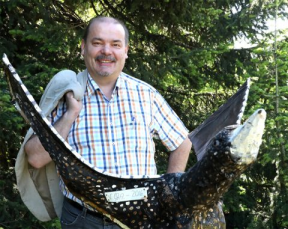
Mayor of Parkano: Jari Heiniluoma
Website: www.parkano.fi
Address: Parkanontie 37, 39700 Parkano
Email: kaupunki@parkano.fi/ etunimi.sukunimi@parkano.fi
Phone number: 03 44331
